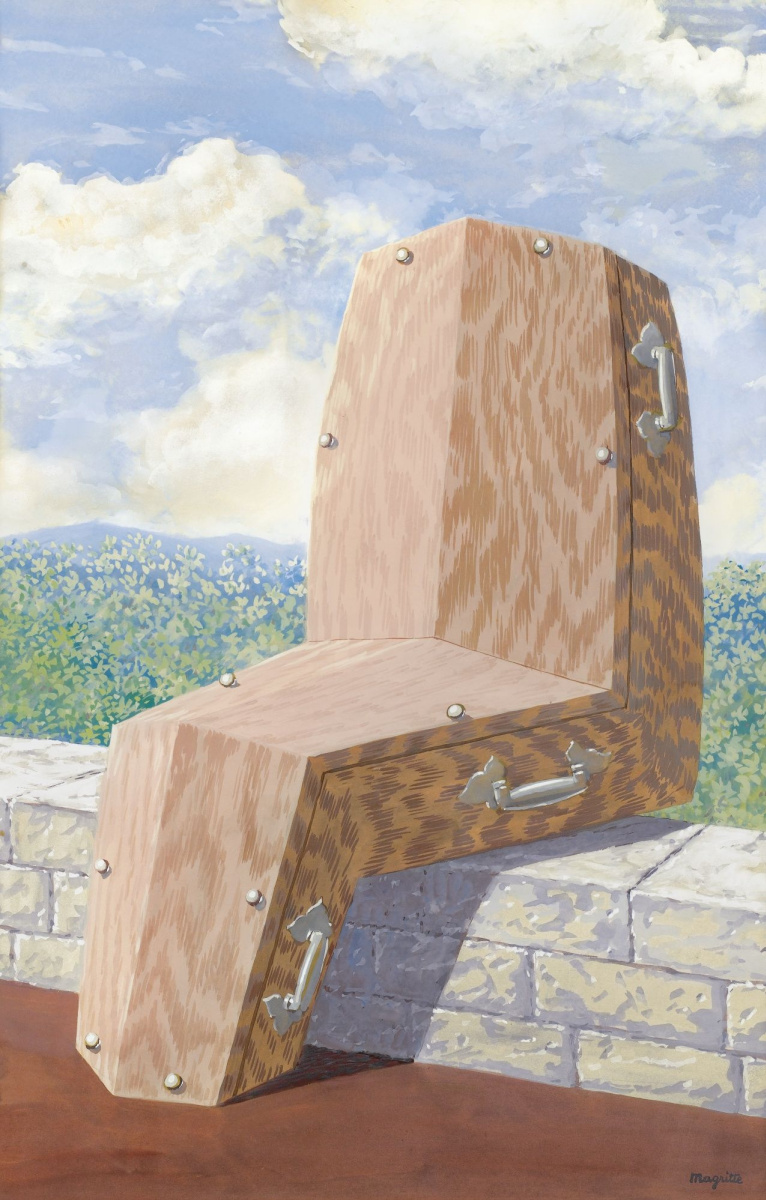log in
Enter site
Login to use Arthive functionality to the maximum
Belle hérétique
Rene Magritte • Peinture, 1960-е
, 54.5×35.5 cm
Descriptif de la toile «Belle hérétique»
By 1960 Rene Magritte was already world famous, and despite the fact that in 1963 the artist learned that he was ill with cancer, until his death in 1967 he continued to create new works, experiment with different genres and participate in exhibitions. The painter referred to his recent works as his "found children," and the iconographic elements that appeared in his paintings at different periods of his career were now seemingly linked together.
In 1963-1964, Magritte returned to the series "Prospects." and painted the two paintings that completed it, The Beautiful Heretic and "To a Beautiful Evening.". These gouaches are a striking example of one of the central themes in Magritte's art - the unexpected juxtaposition of objects in a generalized, unidentifiable landscape. In The Beautiful Heretic Woman, the artist transformed an everyday scene of a man sitting on a brick wall into a scene that is both comical and somber, replacing the figure with a coffin. With his usual simplicity of means and virtuosity of execution the surrealist created a mysterious and ambiguous image: we do not know whether the hero of the painting was turned into a coffin or hidden in it, but in any case we are confronted with life that has become death.
The work Beautiful Heretic Woman was one of seven large-format gouaches painted by René Magritte for a solo exhibition in London, which was organized by his dealer Alexander Iolas in cooperation with the Hanover Gallery. The painting was most probably painted at the turn of 1963 and 1964, and was already on display in May 1964. In addition to the gouache, Magritte also created an oil painting of the same name on the same subject.
Text prepared by Elina Bagmet
In 1963-1964, Magritte returned to the series "Prospects." and painted the two paintings that completed it, The Beautiful Heretic and "To a Beautiful Evening.". These gouaches are a striking example of one of the central themes in Magritte's art - the unexpected juxtaposition of objects in a generalized, unidentifiable landscape. In The Beautiful Heretic Woman, the artist transformed an everyday scene of a man sitting on a brick wall into a scene that is both comical and somber, replacing the figure with a coffin. With his usual simplicity of means and virtuosity of execution the surrealist created a mysterious and ambiguous image: we do not know whether the hero of the painting was turned into a coffin or hidden in it, but in any case we are confronted with life that has become death.
The work Beautiful Heretic Woman was one of seven large-format gouaches painted by René Magritte for a solo exhibition in London, which was organized by his dealer Alexander Iolas in cooperation with the Hanover Gallery. The painting was most probably painted at the turn of 1963 and 1964, and was already on display in May 1964. In addition to the gouache, Magritte also created an oil painting of the same name on the same subject.
Text prepared by Elina Bagmet


